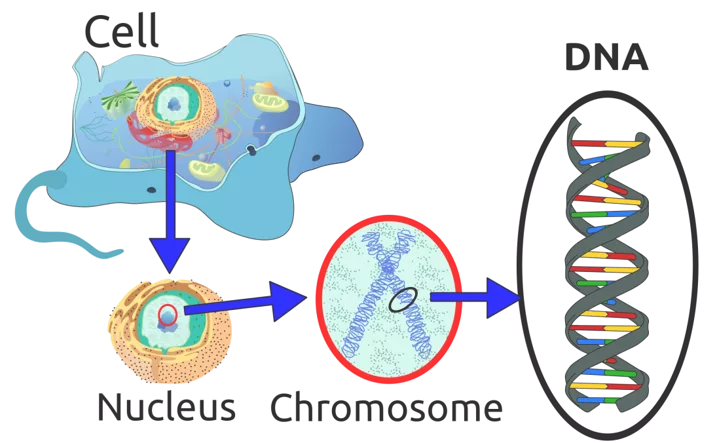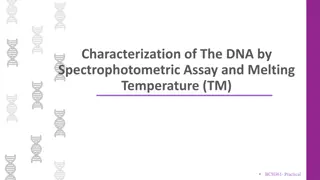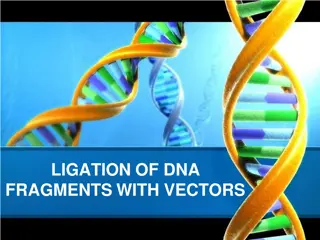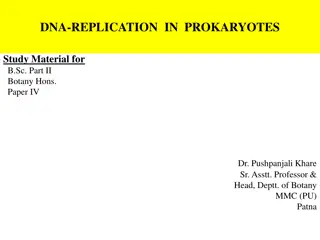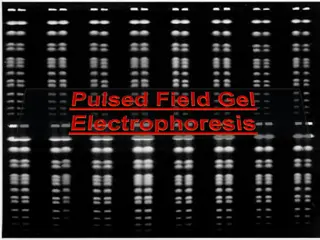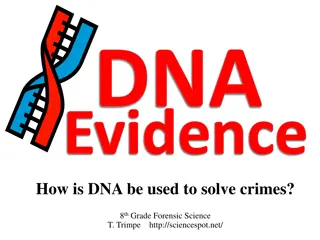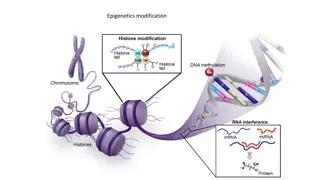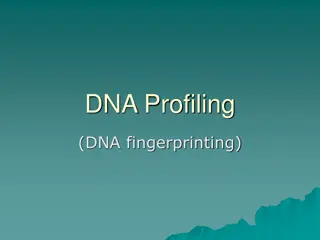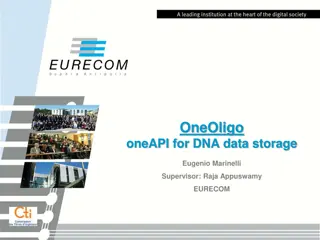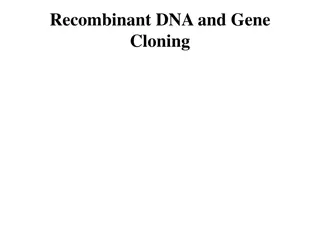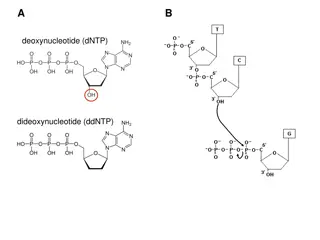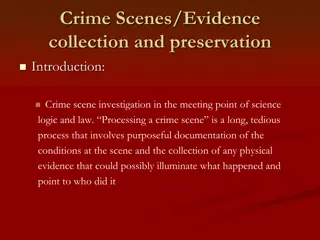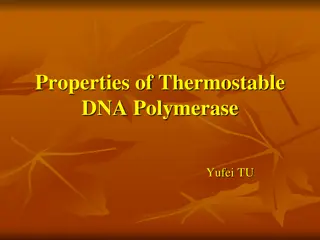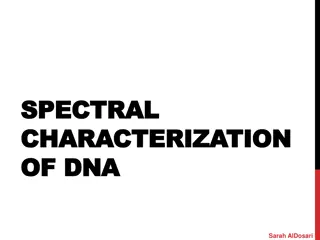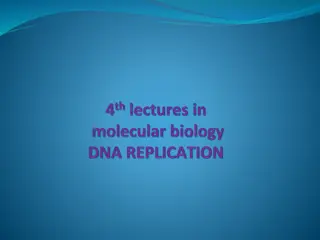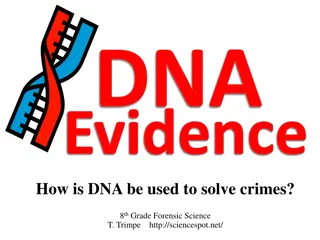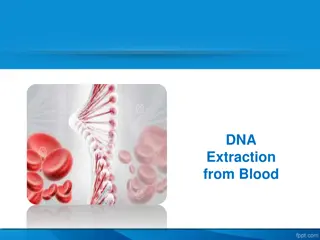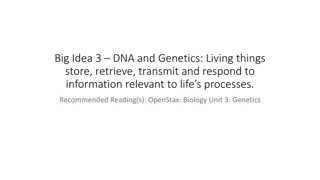DNA in Crime Solving: Evidence, Applications, and Future
DNA plays a crucial role in solving crimes through its unique genetic information. It is utilized to link suspects to evidence, identify victims, and connect crime scenes. Factors affecting DNA evidence and the importance of CODIS in criminal investigations are also discussed, highlighting the significance of DNA profiling in modern forensic science.
Download Presentation

Please find below an Image/Link to download the presentation.
The content on the website is provided AS IS for your information and personal use only. It may not be sold, licensed, or shared on other websites without obtaining consent from the author. Download presentation by click this link. If you encounter any issues during the download, it is possible that the publisher has removed the file from their server.
E N D
Presentation Transcript
DNA How is DNA used to solve crimes? Evidence
Watch the below video to get you started! DNA Video http://upload.wikimedia.org/wikipedia/commons/thumb/e/e2/Eukaryote_DNA-en.svg/2000px-Eukaryote_DNA-en.svg.png
What is DNA? DNA stands for deoxyribonucleic acid and contains genetic information. Itis found on chromosomes located in the nucleus of our cells. What makes up DNA? The sides or backbone of the DNA molecule are made up of sugar (deoxyribose) and phosphate molecules. Double Helix The rungs that form the middle of the molecule are made up of pairs of nucleotides or nitrogen bases. Adenine (A) pairs with thymine (T), while guanine (G) always pairs with cytosine (C). The order of the bases determines the genetic code. DNA Image: http://science.howstuffworks.com/genetic-science/dna-evidence.htm
How is DNA used as evidence? Each person s DNA is different from other people (except identical twins). DNA collected from a crime scene can either link a suspect to the evidence or eliminate a suspect, similar to the use of fingerprints. DNA can identify a victim through DNA from relatives, even when no body can be found. DNA can link crime scenes together by linking the same perpetrator to different scenes locally, statewide, and across the nation. DNA can place an individual at a crime scene, in a home, or in a room where the suspect claimed not to have been. DNA can refute a claim of self-defense and put a weapon in the suspect's hand. It can change a story from an alibi to one of consent. DNA Strand Image & information : http://www.dna.gov/audiences/investigators/know/
DNA & Crimes Watch the two videos below. DNA at Crime Scene Video Where is the future headed with DNA and facial reconstruction? http://cdn4.thetechjournal.net/wp-content/uploads/2014/11/Man-Climbing-DNA.jpg
What factors affect DNA evidence? Several factors can affect the DNA left at a crime scene, such as environmental factors (e.g., heat, sunlight, moisture, bacteria, and mold). Therefore, not all DNA evidence will result in a usable DNA profile. Further, DNA testing cannot identify when the suspect was at the crime scene or for how long. What is CODIS? CODIS stands for COmbined DNA Index System, which is an electronic database of DNA profiles that can identify suspects. DNA profiles from individuals convicted of certain crimes, such as rape, murder, and child abuse, are entered into CODIS and help officers identify possible suspects when no prior suspect existed. Did you know? Each human cell contains three billion DNA base pairs. Our unique DNA amounts to 0.1% or 3 million base pairs. DNA information : http://www.dna.gov/audiences/investigators/know/
True or False? Which three statements below are true? 1. The DNA in a man's blood is the same as the DNA in his skin cells and saliva. 2. Each person's DNA is different from every other individual's. 3. DNA can be found in all the cells in our bodies except the blood cells. 4. DNA can have forensic value even if it is decades old. 5. DNA evidence was first used to get a conviction in a trial in 1987. C:\Users\Tracy\AppData\Local\Microsoft\Windows\Temporary Internet Files\Content.IE5\IYXDRP67\MC910216354[1].png Watch the video segment from NOVA: "The Killer's Trail" and be ready to answer the questions on the next slide.
Video Quiz Choose the best answer for each. 1. Who was the victim? A. Marilyn Sheppard B. Sam Sheppard C. Sam Sheppard, Jr. 2. What are the keys to DNA fingerprinting? A. Chromosomes B. Alleles C. Nitrogen bases 3. Where did the scientist get the sample of DNA for Marilyn Sheppard? A. Hair B. Skin C. Fingernail 4. Whose blood was found in the blood trail? A. Marilyn Sheppard B. Sam Sheppard C. Neither







